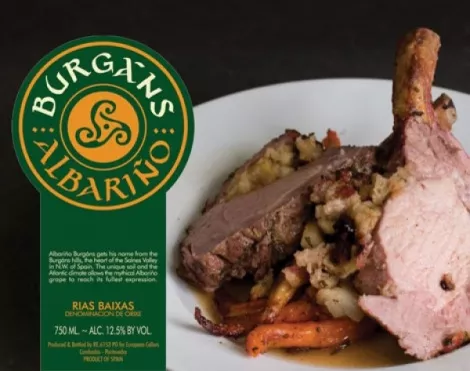
But wait a minute. On the subject of wild boar, what about its domestic cousin? After all, is autumn not the traditional time of year for hog festivals and sausage making? And, while the wines meant for wild game seem to make themselves quite apparent, pork is an entirely different matter.
Pork, in general, is what we call a “neutral” meat, meaning that it is a chameleon when it comes to wine pairings, depending on a variety of factors. Fattiness, method of preparation, accompaniments and the situation all add up to influence the choice of wine—far more than merely the pork itself.
The pork we find in our supermarkets has been bred over the past few decades to be extremely lean. On the other hand, more and more people are seeking out the heritage breeds of yesteryear (e.g., Berkshire) which are fattier and much more flavorful. The reason I bring this up is that a fattier piece of meat can stand up to a bigger, oakier wine better than its leaner counterpart. These heritage breeds are pricey, so most of us must deal with what we can get at the corner store. But even within the same animal, different pig parts are fattier than others, of course.
Method of preparation is indeed important. Roasting or braising intensifies flavors, resulting in heartier dishes than will a simple sauté. Accompaniments are all-important; turn that simple sauté into a stir fry and the soy/chile/hoisin component is the most prominent factor to contend with, not the pork. The infamous sautéed pork chops with apple sauce and a crisp German Riesling or Spanish Albarino make my lips smack. But jam pack those chops with brioche stuffing and braise them in a Dijon cream sauce, and an oaky California Chardonnay finds a place at the table. Oven-roasted with a porcini mushroom reduction, and the red wines mentioned above for the season’s game are, well, game. Pork shoulder offers another insight. From chile verde to a slow-roasted fennel/orange-zest spiked main course, how and with what the meat is prepared means everything.
Subjectivity reigns supreme when it comes to wine pairings (don’t let anyone tell you otherwise), so the dining situation also plays a big roll. Notwithstanding key flavor components in a dish, an attention-getting crown roast of pork with chestnut dressing calls for a special-occasion wine, much more than Wednesday-night Italian sausage and peppers (although yours truly will always opt for the sausage and peppers, but that’s my preference).
These brief examples only begin to show how the cut of meat, method of preparation, accompaniments, and situation are important factors when considering what to serve with pork and other “neutral” meats, such as chicken and veal. Please remember, though, even at the table, the large part of your sipping will be the wine on its own, so, as always, drink what you like. This is not rocket science, and even if your wine selection is an utter failure, it’s fall, after all—you always have bourbon.
Gus Magann is a partner at Vine Lore, a Utah-based wine and liquor brokerage.